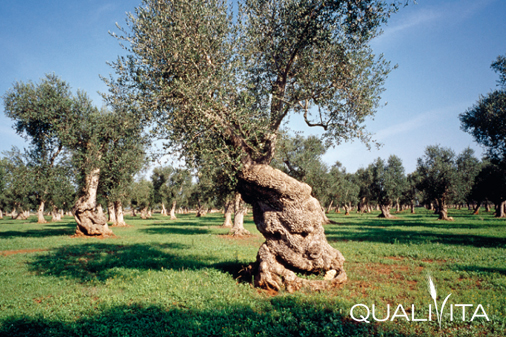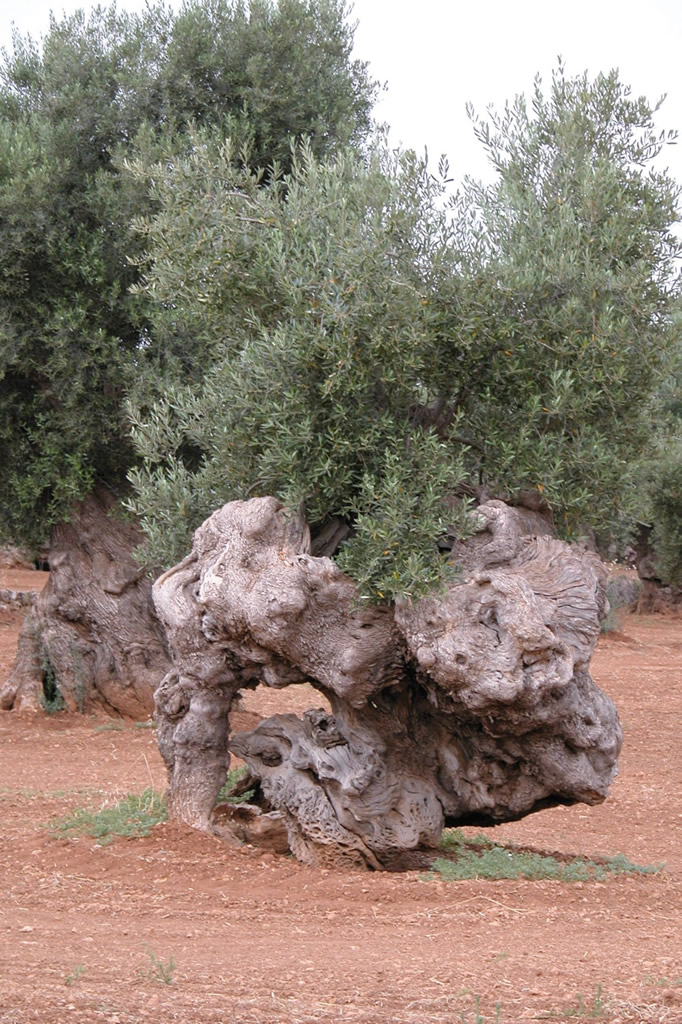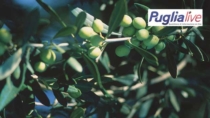Description
Collina di Brindisi PDO extra virgin olive oil is obtained from the Ogliarola Salentina olive variety, which must make up at least 70% of the groves; remaining 30% is made up of other olive varieties that grow in the area, either combined or individually, including Cellina di Nardò, Coratina, Frantoio, Leccino and Picholine.
Production Area
The production, processing and packaging area for Collina di Brindisi PDO extra virgin olive oil is in the municipalities of Carovigno, Ceglie Messapica, Cisternino, Fasano, Ostuni, S. Michele Salentino, San Vito dei Normanni and Villa Castelli, in the Province of Brindisi, in the Apulia region.
Production Method
The harvest must take place between the first ripening of the olives and January 31st of each year. The olives used for production must be picked directly from the tree, by hand or mechanically. They are then washed at room temperature and must be milled within two days of the harvest.
Appearance and Flavour
Collina di Brindisi PDO extra virgin olive oil is green to yellow in colour, with a light to mild fruity smell and a fruity flavour, with delicate notes of bitterness and piquancy.
History
The particular suitability of the production area of Collina di Brindisi PDO for the cultivation of olives was evident since Roman times, although the Greeks and Phoenicians had already realised that the land had enormous potential. It is no coincidence that the most widespread variety in the Brindisi area, that which Pliny the Elder (1st century AD) referred to as Olea lapygia, is today known as Ogliarola, precisely to indicate the large amount of oil that the olives yield. The presence of centuries-old olive trees in the cities of Ostuni and Fasano is further evidence of the ancient origins of olives in this area.
Gastronomy
Extra virgin olive oil is highly perishable and it is therefore important that it is stored correctly in order to maintain its organoleptic properties. It should be kept in a cool, dark place at a temperature between 14 and 18 °C, away from heat sources and other foods that emit strong odours. It should be consumed within 4-6 months of pressing to fully appreciate its flavour. Raw Collina di Brindisi PDO extra virgin olive oil is ideal for dressing meat and fish-based dishes, vegetables and bruschetta, although it is also used as an ingredient in cakes, biscuits and desserts.
Marketing
The product is marketed as Collina di Brindisi PDO extra virgin olive oil. It is sold in food-grade glass or tin plate recipients of no more than 5 litres. The year of production must be indicated on the label. The label must bear the indication Collina di Brindisi, followed by the wording Protected Designation of Origin (PDO), the European symbol and the production year. The specific guarantee mark, which consists of a unique alphanumeric code that ensures the traceability of the product, must be on the packaging.
Distinctive Features
Collina di Brindisi PDO extra virgin olive oil is characterised by a maximum acidity of 0.8 g per 100 g of oil and a panel test result that is higher than or equal to 6.5.















